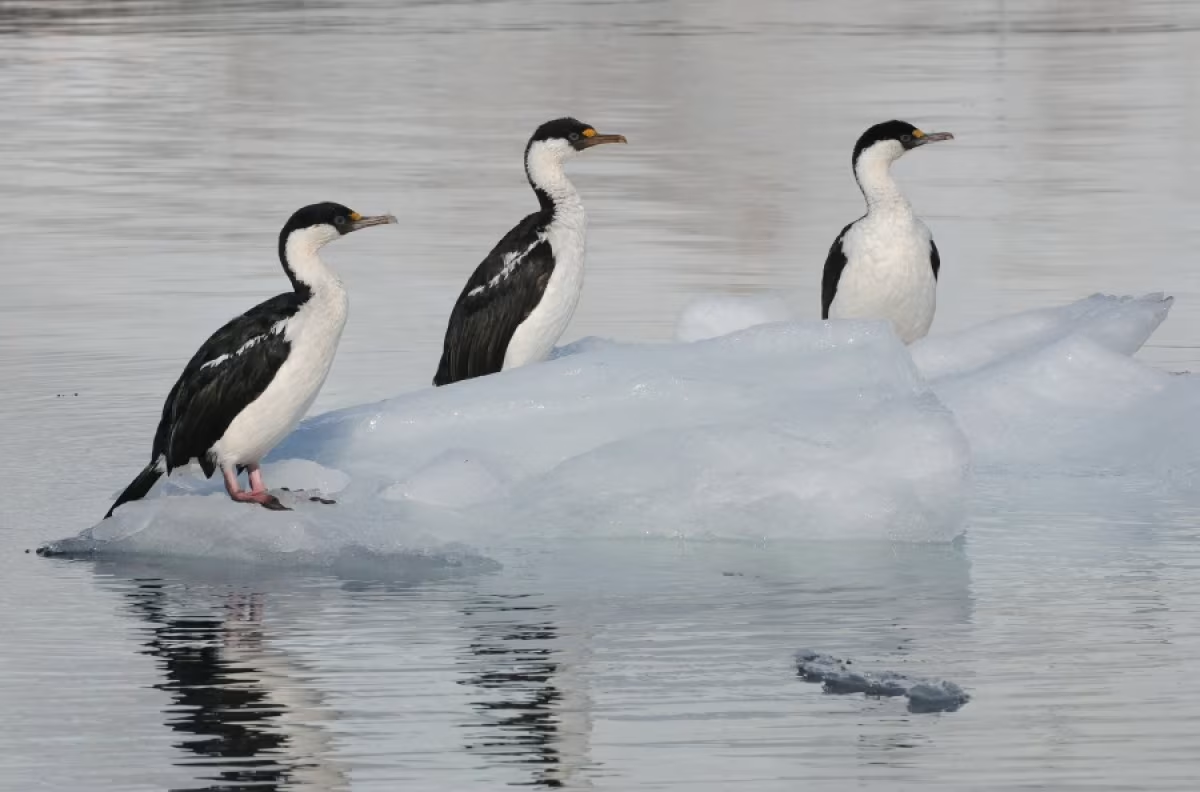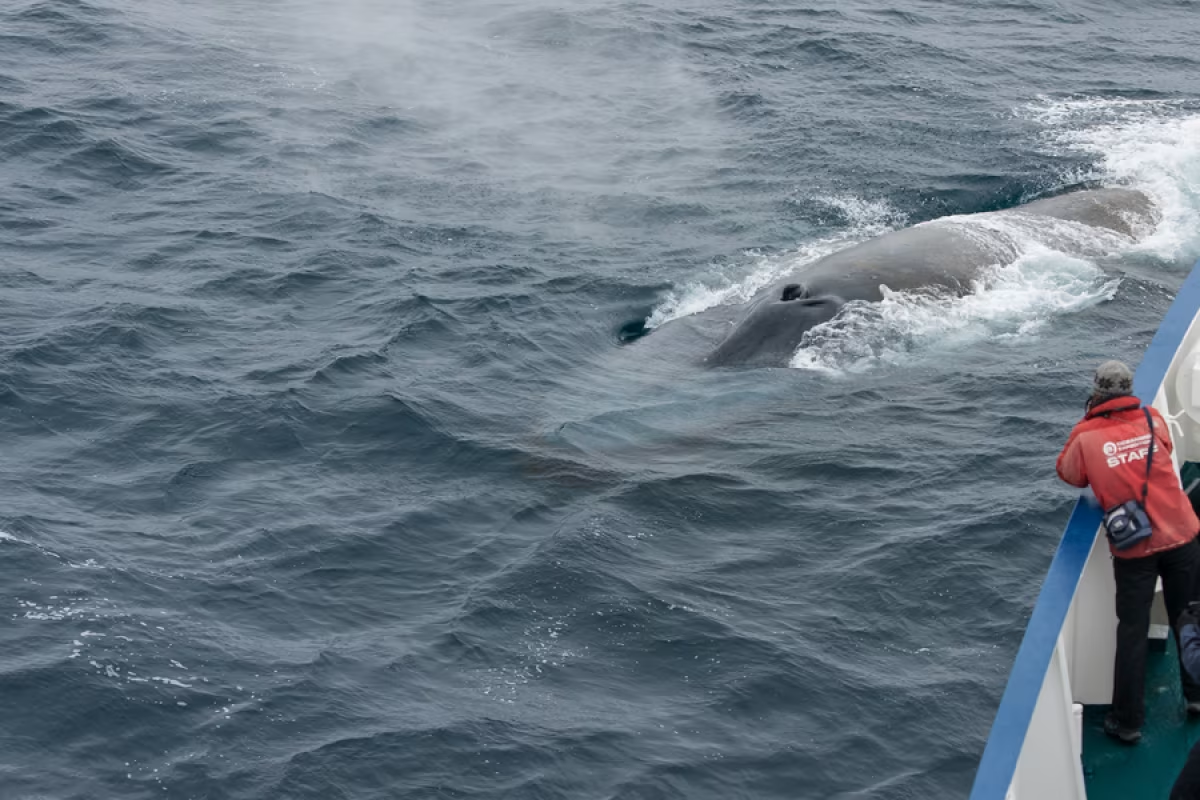Wildlife facts of the oft-overlooked South Orkneys
The South Orkney Islands are frequently forgotten as an Antarctic travel option.
But they shouldn’t be: Forming part of the Scotia Sea Islands tundra ecoregion, the South Orkneys are home to a healthy supply of wildlife despite their rough conditions.
Much of this wildlife represents core Antarctic animal attractions: penguins, seals, seabirds, and whales.
(Although, due to mass hunting, whales can be sadly rare in this region.)
While there are far more than eleven species in the South Orkney Islands, the following list includes some of the more popular varieties, along with a few fun facts about them.
1. Adélie penguins
Named after Adélie Land, an area in Antarctica claimed by the French, Adélie penguins are among the most recognizable penguins in Antarctica.
Their genus name, Pygoscelis, means “rump-legged.”

Adélie penguins follow the sun around the Antarctic regions, since the winter sun never entirely sets there. Some Adélie migrations have been as long as 17,600 km (10,900 miles).
Adélie penguins are one of only two penguin species to be found on the mainland of Antarctica, the other being emperor penguins.
2. Gentoo penguins
Nobody is sure why the word “gentoo” was applied to this penguin species, though it may have come from the Portuguese word gentio, which refers to gentiles.
Gentoo penguins are the third largest penguin species in the world.
Unlike other penguins, gentoos do not have a yearly migration cycle, and their weight and height increases the farther they live from the Antarctic Peninsula.

Gentoo penguins only breed in areas free of snow and ice, and cleanliness is vital: If the previous year’s nesting area is covered with waste or too trampled, gentoo penguins will relocate.
The gentoo penguin is the only species in the Antarctic Peninsula region that is expanding in numbers and distribution.
3. Chinstrap penguins
Chinstrap penguins are referred to as “stonebreaker penguins,” not because they collect stones for nests, but because their screech is so piercing it is said to break stones.
Outside of the breeding season, chinstrap penguins often congregate on icebergs.

They are closely related to gentoo penguins, though chinstrap penguins are actually decreasing in the Antarctic Peninsula area.
Chinstrap penguins are one of the most aggressive species of penguin and can lose half their weight during the breeding season.
4. Cape petrels
Cape petrels are the only member of the Daption genus.
They share a feature with other members of the Procellariidae family, creating oil in their stomachs that can be used as a source of nourishment on long flights, regurgitated to feed their young, or sprayed at predators.
Daption comes from ancient Greek and means “little devourer,” and the “Cape pigeon” alternative name comes from the bird’s habit of pecking at water while it eats.

Also, the “Cape” in the Cape petrel name refers to the Cape of Good Hope, where these birds were first identified.
Cape petrels are the only kind of marine bird with its distinct dappled coloring.
5. Snow petrels
One of the three species of bird to breed only in Antarctica, snow petrels are the only members of the Pagodroma genus.
Snow petrels have the southernmost breeding distribution of all birds.
Like many other seabirds, snow petrels have a gland above their nasal passage that excretes a saline solution. This helps them balance the amount of salt in their body, because of all the salt they consume while eating from the sea.

The name “petrel” comes from Peter the Apostle and was applied because of the bird’s ability to “run” on water in order to take off.
Pagodroma comes from the Greek words pagos, which means “ice,” and dromos, which means “a running course.”
6. Blue-eyed shags (Antarctic shags)
Sometimes confused with imperial shags, blue-eyed shags are the only kind of cormorant to enter the Antarctic regions.
Blue-eyed shag are the only Antarctic birds that maintain a nest year-round if the area is free of ice.
They don’t travel far from their nests to feed, which historically made blue-eyed shags a welcome sight for sailors, as their presence meant land was nearby.

Blue-eyed shags are the only Antarctic birds whose chicks are born without a protective down, leaving them especially dependent on their parents to keep them warm.
The bumpy mound at the upper base of the blue-eyed shag bill is called a “caruncle.”
7. Antarctic fur seals
Unlike some other species of seals, Antarctic fur seals have visible ears and are in fact the only seal with visible ears in the region.
Antarctic fur seals live in the Antarctic Convergence, a zone of water between the frigid waters of the Antarctic Continent and the more temperate waters to the north.
This particular species is one of nine fur seal species worldwide.

Antarctic fur seals can walk on land due to their ability to turn their rear flippers forward, virtually using them as feet.
These fur seals were once nearly hunted into extinction, but now the species numbers in the hundreds of thousands (if not millions) during the breeding period.
8. Fin whales
Fin whale faces are unusually asymmetrical: The right side of their jaw, lip, and baleen are yellow-white, while the left sides are gray.
Because fin whales are mostly pelagic (spending most of their time in deep seas), they are hard for scientists to study.
It is known, however, that they are the second largest mammals after blue whales.

Fin whales got the nickname “razorbacks” because of a pronounced ridge behind their dorsal fins.
When fin whale sounds were first recorded, scientists thought they were geological sounds (like tectonic plates grinding) due to their low frequency – the lowest sound of any animal, tied with the blue whale.
9. Sei whales
The “sei” in sei whale comes from the Norwegian word for pollock, a type of fish. The Norwegians observed that sei whales and pollocks tended to arrive in the same areas at the same time every year.
Sei whales have been compared to the cheetahs, because they can swim fast but tire quickly.
Like other baleen whales, seis have two blow holes. But unlike other baleens, sei whales prefer to stay out of truly cold waters.

Although sei whales prefer traveling solo or in small pods, they sometimes congregate by the thousands in an area where food is plentiful.
Their Latin name, Balaenoptera borealis, means “winged whale” and “northern.”
10. Humpback whales
Barnacles form on the humpback whale’s body, giving them their bearded appearance.
Humpback whales make long migrations twice every year: They travel to polar water in the summer to feed, then to tropical waters in the winter to breed.
The humpback whale’s Latin name, Megaptera novaeangliae, translates to “great winged newfoundlander,” indicating the whale’s huge wing-like flippers.

A humpback’s song can be heard from as far as almost 20 km (12 miles) away, and their spout can reach as high as six meters (19.7 feet).
When getting ready to make a deep dive, humpback whales arch their backs, which is how they earned their name.
11. Blue whales
If you’re lucky, you might even see blue whales in the South Orkney Islands.
Growing to around 30 meters (98 feet) long and weighing up to 180 metric tons (395,000 pounds), blue whales are the largest creature to have ever lived on Earth.
Their range is worldwide, though blue whales do not live under the polar ice caps.

Sadly, these whales are still endangered due to mass hunting.
The main diet of blue whales is krill, but they also eat other plankton. They are not aggressive to humans, and indeed can be quite curious of ships.
Blue whale tongues can outweigh elephants, and their hearts can outweigh cars.

